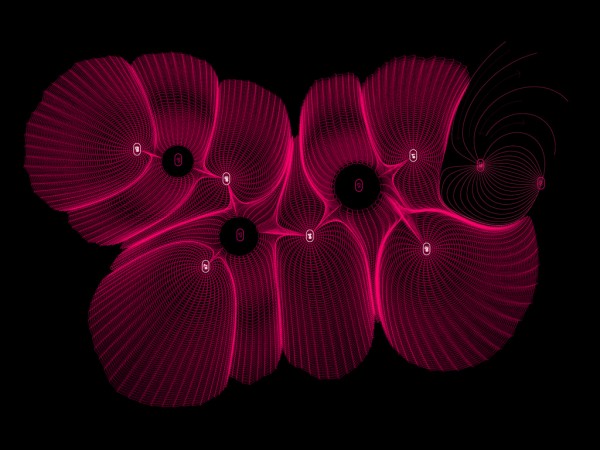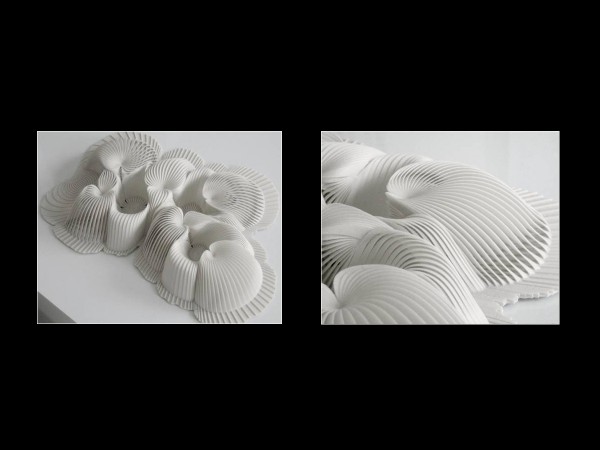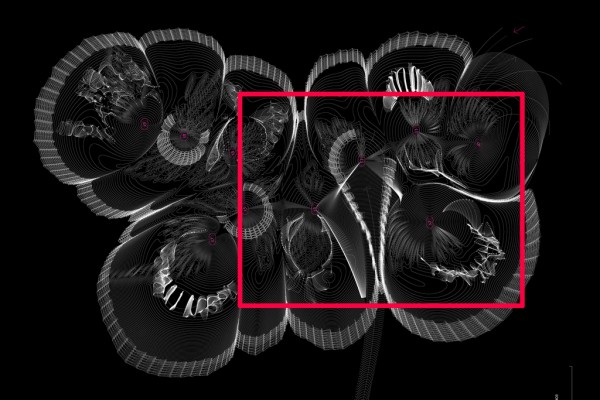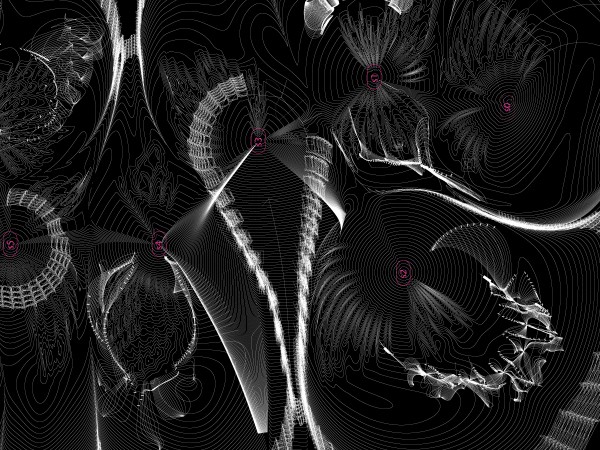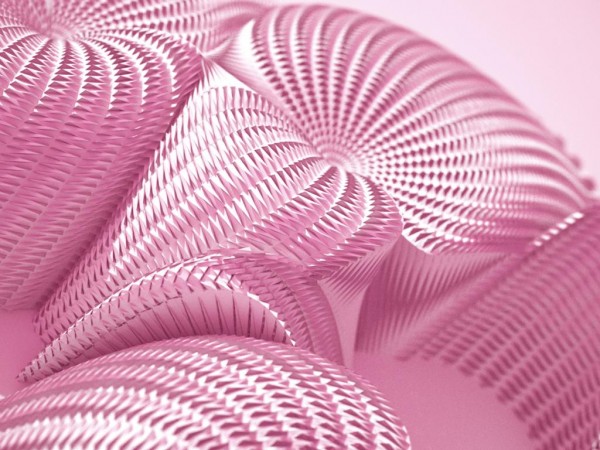Designed by Alisa Andrasek, the Seroussi Pavilion was “grown” out of self-modifying patterns of vectors based on electro-magnetic fields (EMF). Through logics of attraction/repulsion trajectories were computed in plan and than lifted via series of structural microarching sections through different frequencies of sine function. Additional feature built into script allows for local adaptation to the site in regards to the section (pavilion is implanted into a steep hill _ EMF trajectories needed to “find the ground”). Six different geometrical systems were used for design and are all steaming out of primary trajectories. The plan of the pavilion differs greatly from a classical notion of architectural plan drawing _ it is a dynamic blueprint closer to musical notation _ deep ecology of imbedded algorithmic and parametric relationships are the seed for possible materialization procedures and adaptation to the site conditions. In a design of the roof tilling resolution was increased by the algorithmic differentiation of components features.
Distribution of lighting/shading and programming of views is achieved through sine-wave functions driving parametric differentiation of angle, orientation and the size of the aperture as well as the relationship of metal and glass components within each cell. Algorithmically nested EMF field charges. Double charged trajectories are producing internal cocoon like spatial fabric _ a system of veils that unfurls through the space building up continuous yet highly differentiated interlaced field. Wrapped in and in-between cocoon’s swirling fibers are the opportunities for different degrees of cohabitation or humans and art collection _ living with art.
Programming and reprogramming different exhibition sequences is understood as series of probabilistic events. One can rearrange the sequences of art pieces by finding spatial opportunities within the labyrinthine fabric. Floor’s micro-dunning is developed through a complex attractor script operating between 2 sets of geometries. Two asynchronous series of FP’s magnetic trajectories were used with parametrically variable density of surface meshes. Micro-dunning behaviors are imagined as a low furnishing system that also articulates 3 wet zones in the house.
Alisa Andrasek _ principal designer
FlowerPower custom written plug-in: Kyle Steinfeld with Alisa Andrasek
Design team: Ezio Blasetti / Che Wei Wang / Fabian Evers / Lakhena Raingsan / Jin Pyo Eun / Mark Bearak
Special thanks to Michael Reed (computational geometry)

